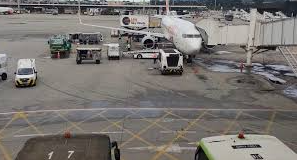Experts question contingency measures as aviation disruption escalates.
The abrupt shutdown of Heathrow Airport is expected to disrupt international travel for several days, with financial losses potentially reaching tens of millions of pounds. The incident has raised pressing concerns about the airport’s contingency planning and infrastructure resilience.
Industry experts expressed disbelief over the scale of the power outage, comparing it to the disruption caused by the Icelandic ash cloud in 2010. The crisis unfolded after a fire at a nearby electrical substation crippled both the airport’s primary and backup power systems, forcing Heathrow to cease operations.
With around 1,300 daily flights passing through Heathrow, the impact was immediate. The fire, which broke out just after 11pm on 20 March (7am Singapore time on 21 March), resulted in flight diversions across Britain and Europe. Several long-haul flights were forced to return to their departure points.
Travel consultant Paul Charles estimated the economic fallout at approximately £20 million per day, warning that reopening on Saturday remains uncertain due to the airport’s compromised power infrastructure. “A failsafe backup system should prevent an outage of this scale. Given Heathrow’s importance to the UK’s transport network, such measures should have been in place,” he told Reuters.
Energy Minister Ed Miliband confirmed that engineers were working on a third backup system, acknowledging that the fire had rendered the primary and secondary power sources inoperable. He added that the government is assessing whether broader lessons need to be learned for critical infrastructure resilience.
Concerns Over Heathrow’s Preparedness
The shutdown comes less than a year after Heathrow described itself as “a leader in airfield resilience” in a report submitted to the UK’s Civil Aviation Authority. Experts have questioned how an airport of this scale could experience a complete power failure.
Tim Green, an electrical engineering professor at Imperial College London, noted: “It is highly unusual for all power supply routes to be taken out simultaneously.”
International risk management consultant Tony Cox echoed this concern: “I can’t recall another instance where a major infrastructure hub was completely shut down for an entire day due to a fire.”
Ongoing Disruptions and Industry Impact
The repercussions of the closure will be felt for days, with airlines struggling to reposition aircraft, crew, and passengers. Independent air transport consultant John Strickland warned: “Aircraft and crew are stranded in various locations, requiring legal rest periods before they can resume flights. This will create a domino effect on schedules for several days.”
The incident has reignited concerns about the reliability of UK aviation systems. A 2023 air traffic control failure, which cost the industry over £100 million, had already exposed vulnerabilities in the sector.
Willie Walsh, former British Airways chief and current director of IATA, criticised Heathrow’s handling of the crisis, calling it “a clear planning failure.” He argued that extensive scrutiny of the airport’s preparedness is inevitable.
Who Bears the Cost?
Under UK and EU regulations, passengers are entitled to compensation for flight delays and cancellations if the airline is at fault. However, since this incident is infrastructure-related, airlines are not legally required to provide compensation beyond basic rerouting or refunds.
Despite this, most carriers are offering hotel stays and meal vouchers for stranded passengers, though there are growing debates over who should cover these expenses. Walsh called for a fairer system, stating that airlines should not bear the financial burden alone when infrastructure failures cause disruptions.
Strickland noted that liability discussions will likely be complex, involving Heathrow Airport, power suppliers, airlines, and insurers. “No party will want to take full responsibility if they can avoid it,” he added.








